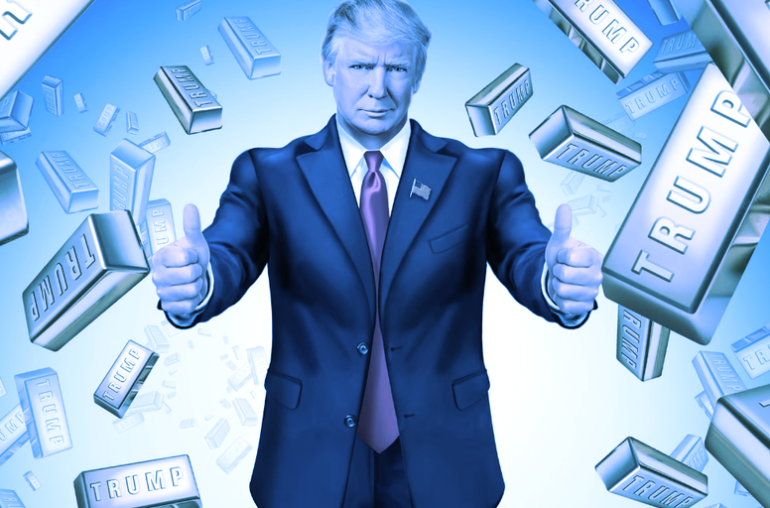Summer 2022 market conditions for non-fungible tokens (NFTs) have not been ideal. Many large projects have experienced a drastic deterioration in their project price floors as NFT owners scramble back into dollars.
As of June 21, 2022, the price floor, which is the cheapest Bored Ape Yacht Club (BAYC) NFT currently on the market, was around $98,220, down from over $400,000 as recently as late April.
The BAYC collection has not been at this level since October 2021.
At the same time, the price floor for the CryptoPunk NFTs, which is credited as being one of the first projects to bring forth the idea of collectible social media profiles, has dropped dramatically to $74,000, a low not seen since early 2021.
NFT monthly trading volumes nearly hit $5 billion in January 2022 according to CryptoSlam data, but volumes have consistently trended downwards since then.
The monthly trading volume with only roughly a week left in June is $650,461,250 according to data from CryptoSlam.com, which is an 86.17% decrease since January 2022 in volume.
Although the global economy is struggling, the 2021 inception of new projects and use cases for the NFT market has only increased.
What was originally a small niche for artists and content creators to monetize their work has now spread into the world’s largest fashion and entertainment industries.
A few popular celebrities and companies building projects are:
Although it is never impossible for the NFT market capitalization to drop below $1 Billion, it is highly unlikely. According to recent data from CoinMarketCap.com, the total NFT market cap as of June 22, 2022, is just over $12 billion.
For the NFT market cap to drop to these levels, a 91.84% decrease in total value in the NFT market would need to occur, which would essentially mean most of the NFT market value has been drained.
Unless you are an NFT mega-bear, this event is highly unlikely.
Thanks to new use cases, NFTs have only continued to spread into new sectors; new areas include tokenized real estate and digital identities.
Based on market capitalization, the more NFTs that can bleed into new industries and achieve solid everyday use cases, the more growth will occur in the NFT market capitalization.
To understand why the NFT market has been going down, a useful insight is to take into account the state of the economy on a global scale.
The summer 2022 financial market outlook is bearish, and people are likely to sell riskier assets like NFTs to pay their bills and catch up on rent.
NFTs are still a small market with big aspirations, and growing pains are to be expected for innovation.
The NFT market is not dropping because of a lack of ideas and creativity but because of a slowdown in the economy on a global scale. Historically the digital asset market has a similar correlation to the stock market as well. As long as the Nasdaq and S&P trend to the downside, the NFT market probably will, too.
While it is not currently possible to short NFT collections, you can short tokens tied to NFTs and the metaverse on Huobi and FTX. Some of these platforms are prohibited in the U.S.
A non-exhaustive list of NFT and metaverse tokens are Decentraland (MANA), Ape Coin (APE), Sandbox (SAND) and Axie Infinity (AXS).
Shorting and using margin is risky, so it would be wise to educate yourself first before trading. One easy way to learn how shorting and using margin works is to practice paper trading stocks.
With only six months left in 2022, a near 10x rise in the NFT market cap is unlikley but not impossible. To make a projection into the future, ask yourself a few important questions.
If the production value coupled with consumption trends are higher because new applications for NFTs are discovered, the NFT market might hit $100 billion market capitalization.
On the other hand, growing this much six months would require the NFT market to produce valuable products and applications at an exceedingly fast rate. At the same time, NFTs will need to take market share in mature sectors of the economy like real estate for the market to continue expanding.
If you are looking to purchase your first NFT with Ethereum, then a few platforms that you can use are OpenSea, Rarible and Mintable. These platforms have older collections that tend to be viewed more as blue chips in the NFT space.
Gas fees or transaction costs can be a barrier to entry for smaller investors, so other alternatives might be Solanart.com, Axie Infinity and NFT.com.
The NFT market has performed poorly over the past month, and the deterioration in market conditions has only exacerbated the situation for NFT owners. If the NFT market continues to crash, a tightening of global financial conditions and an even higher level of fear in the markets will likely be the cause.
Tighter financial conditions tend to hurt riskier assets like NFTs as investors need liquidity from riskier assets to cover their bottom line. Inflation must slow down and fear levels need to drop before it would be smart to call for any short- to mid-term bottom for the NFT market.
The markets seem to be in a state of doom and gloom but if you were to take a look under the hood, then you might find that the NFT industry is in reality resoundingly positive.
Since the start of 2022, major companies have begun ventures to bring NFT functionality to the forefront of their giant Web2 user bases.
Meta, the parent company of Facebook and Instagram, both owned is currently preparing features that allow users to display NFTs as their profile pictures and mint NFTs on the platform. Meanwhile, Twitter has also unveiled a new NFT profile picture feature similar to the one unveiled by Meta.
This continuous Web2 implementation of NFTs suggests the market’s long-term outlook is strong and the current price dump is a mere bump in the road.
If you are a strong believer in the industry then it would be wise to maintain a long-term outlook on your holdings and invest where there is a strong sense of community and utility.
Benzinga crafted a specific methodology to rank cryptocurrency exchanges and tools. We prioritized platforms based on offerings, pricing and promotions, customer service, mobile app, user experience and benefits, and security. To see a comprehensive breakdown of our methodology, please visit see our Cryptocurrency Methodology page.
Disclaimer: As per the European Securities and Markets Authority (ESMA), the percentage of retail clients losing money on CFD trading must be updated every three months. Please note that eToro’s new results are 68% in regards to retail investor accounts losing money when trading CFDs with eToro.
This content should not be interpreted as investment advice. Cryptocurrency is a volatile market, do your independent research and only invest what you can afford to lose.
Want to advertise with us? Send us a message.
© 2022 Benzinga | All Rights Reserved
Advertiser Disclosure: TD Ameritrade, Inc. and Accretive Capital LLC are separate, unaffiliated companies and are not responsible for each other’s services and products.
Editorial Disclosure: Reviews are as determined by Benzinga Money. Opinions expressed here are solely the author’s and have not been reviewed, approved or otherwise endorsed by reviewers.


